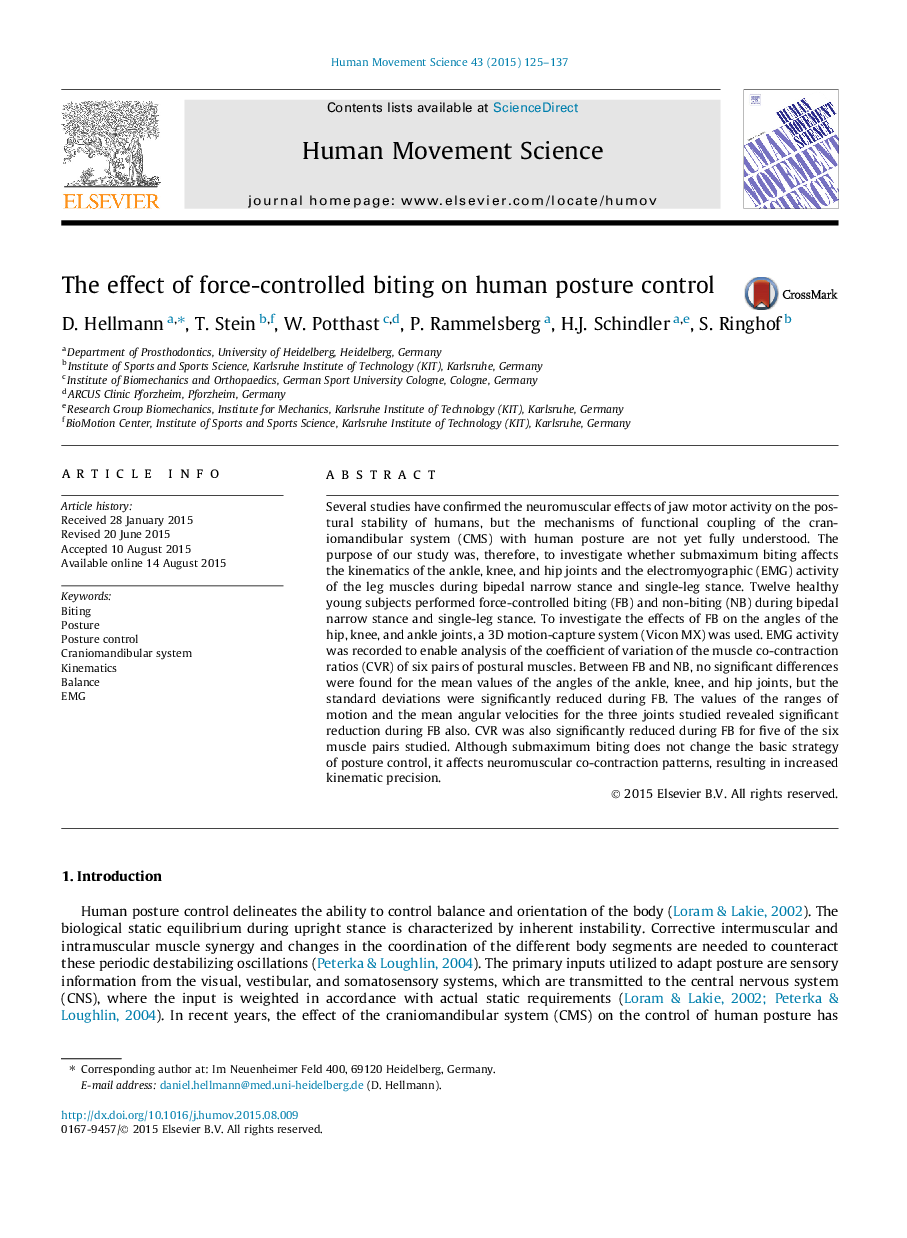| Article ID | Journal | Published Year | Pages | File Type |
|---|---|---|---|---|
| 928270 | Human Movement Science | 2015 | 13 Pages |
•Literature reports reveal that jaw motor activity affects posture stability.•We examined the effects of submaximum biting during bipedal and single-leg stance.•Biting reduced the ranges of motion and angular velocity of the hip, knee, and ankle joints.•The variability of muscular co-contraction decreased during submaximum biting.•Biting increased the precision of neuromuscular patterns.
Several studies have confirmed the neuromuscular effects of jaw motor activity on the postural stability of humans, but the mechanisms of functional coupling of the craniomandibular system (CMS) with human posture are not yet fully understood. The purpose of our study was, therefore, to investigate whether submaximum biting affects the kinematics of the ankle, knee, and hip joints and the electromyographic (EMG) activity of the leg muscles during bipedal narrow stance and single-leg stance. Twelve healthy young subjects performed force-controlled biting (FB) and non-biting (NB) during bipedal narrow stance and single-leg stance. To investigate the effects of FB on the angles of the hip, knee, and ankle joints, a 3D motion-capture system (Vicon MX) was used. EMG activity was recorded to enable analysis of the coefficient of variation of the muscle co-contraction ratios (CVR) of six pairs of postural muscles. Between FB and NB, no significant differences were found for the mean values of the angles of the ankle, knee, and hip joints, but the standard deviations were significantly reduced during FB. The values of the ranges of motion and the mean angular velocities for the three joints studied revealed significant reduction during FB also. CVR was also significantly reduced during FB for five of the six muscle pairs studied. Although submaximum biting does not change the basic strategy of posture control, it affects neuromuscular co-contraction patterns, resulting in increased kinematic precision.
